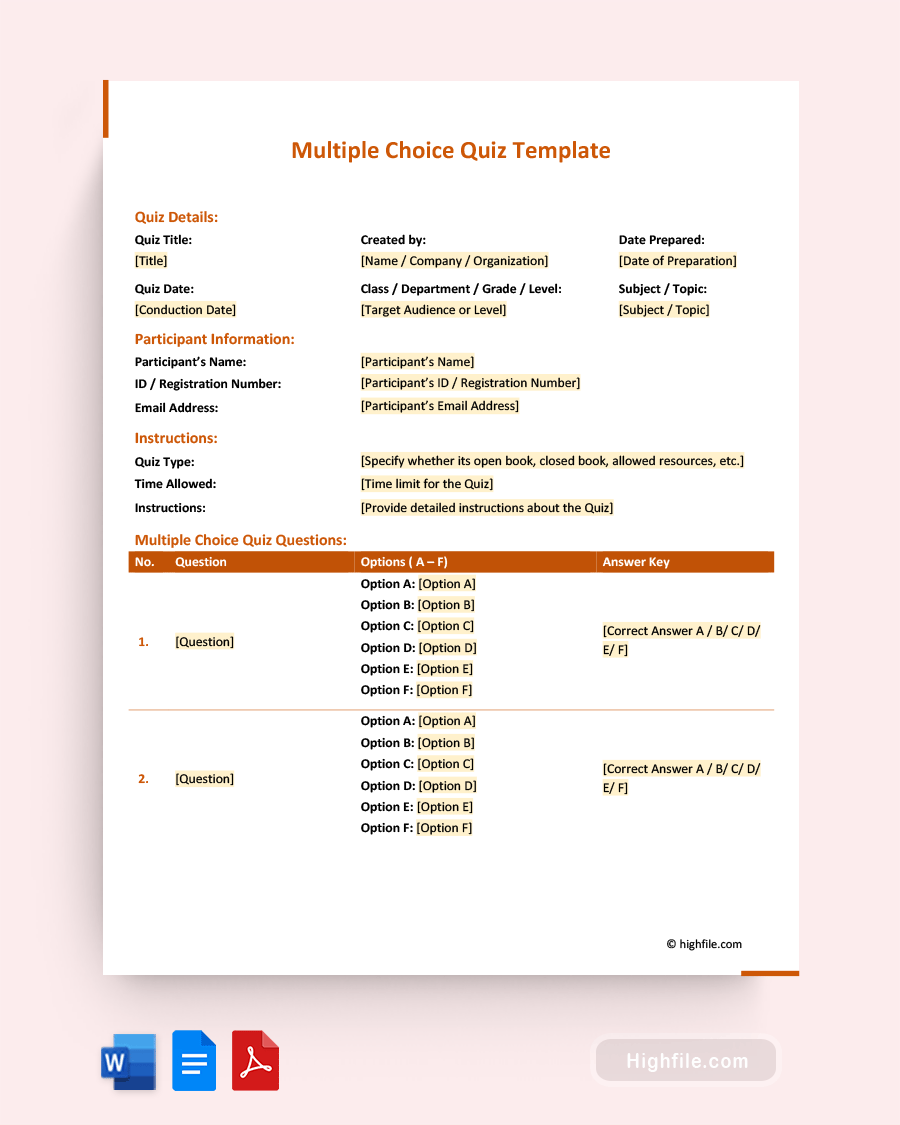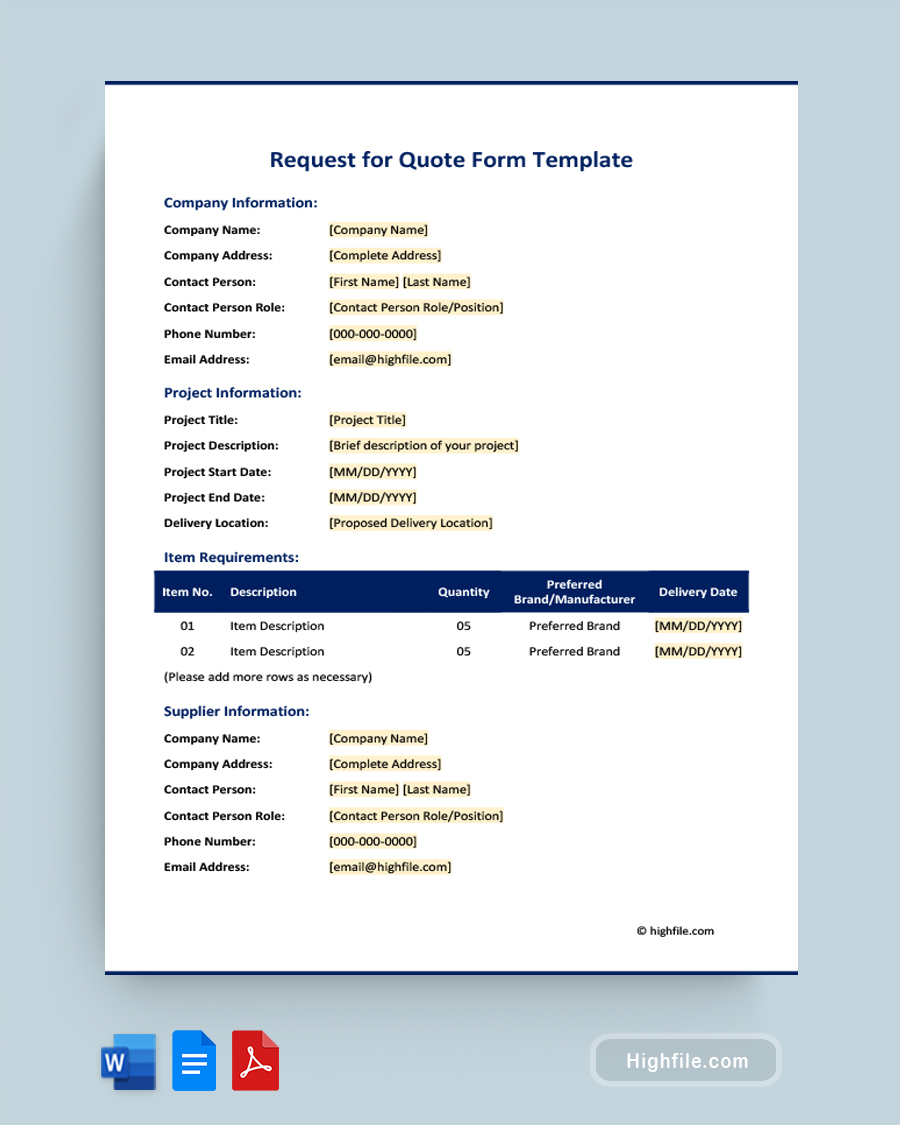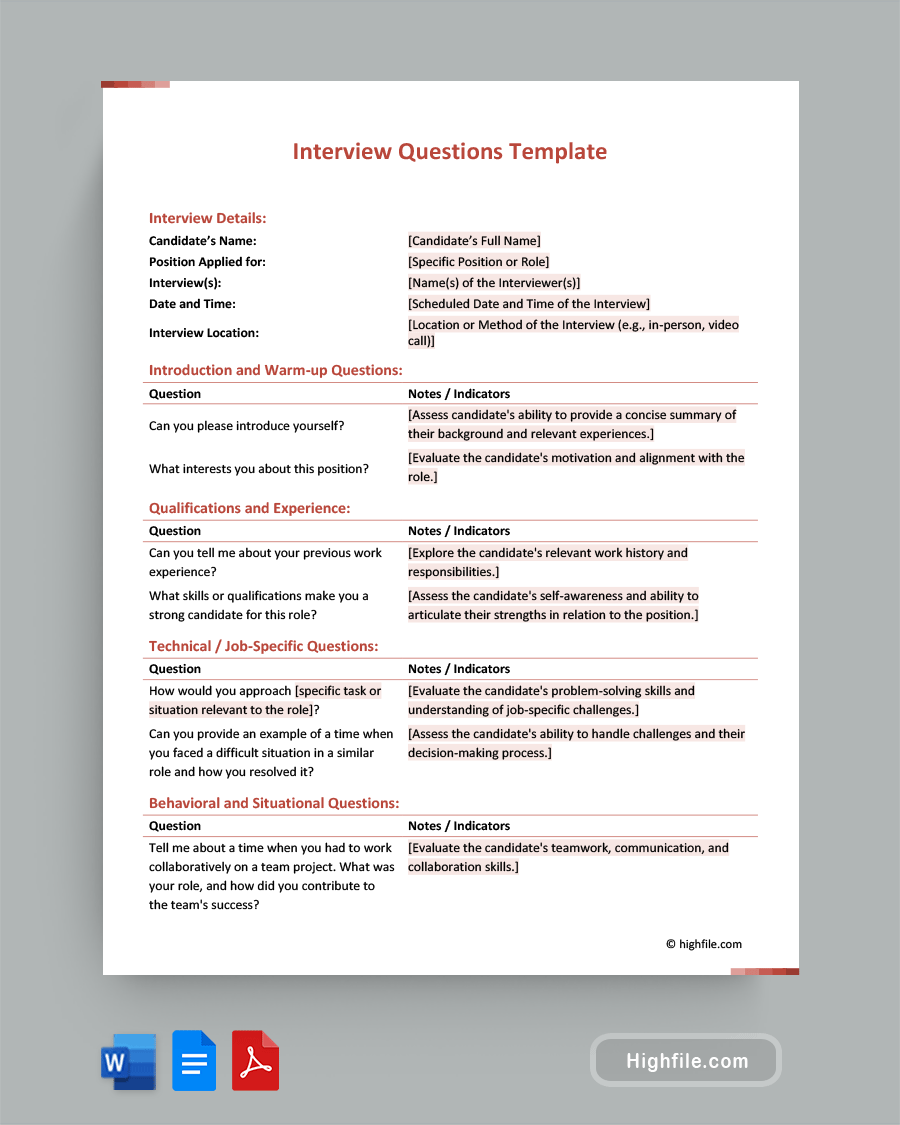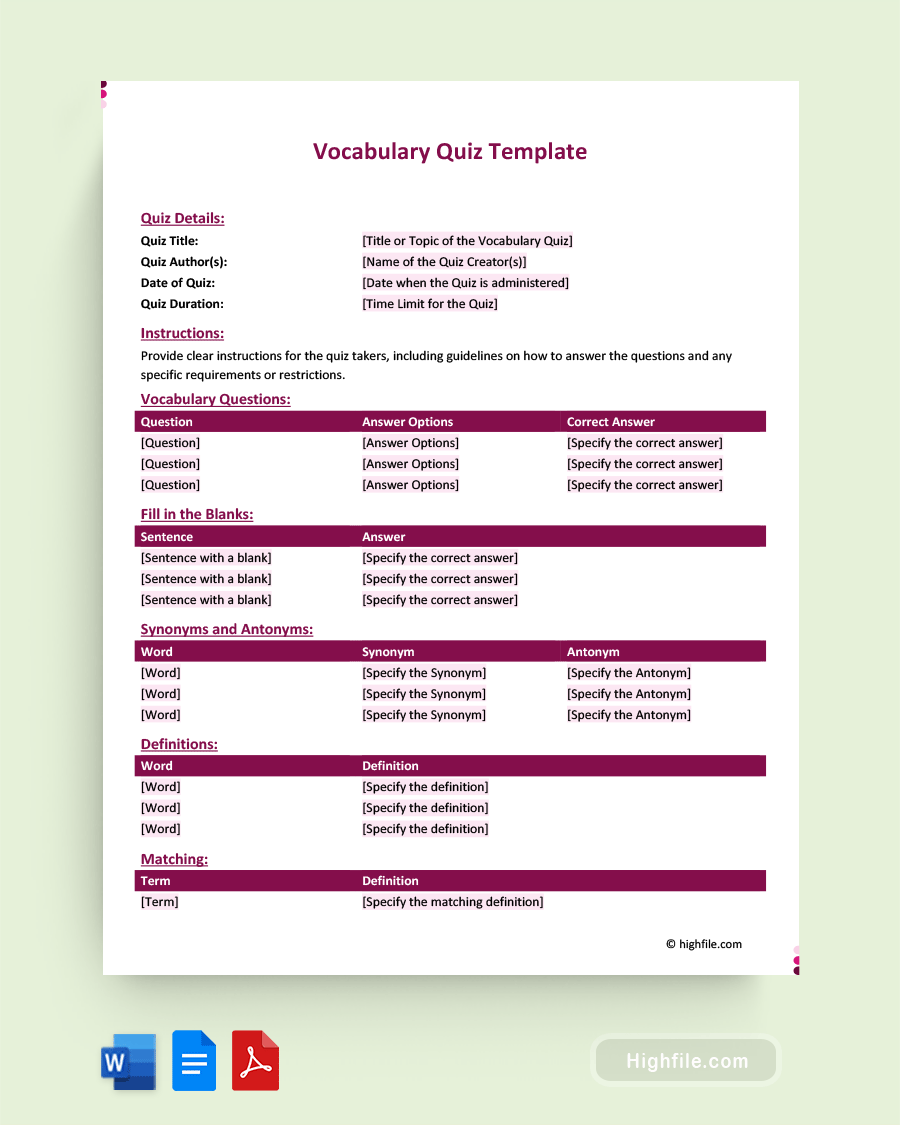Every educator hopes to instill a good bit of wisdom into their students, but you can’t simply guess whether they remember what you’ve taught them. That is why we have tests. Unfortunately, making all your quizzes from scratch is time-consuming. With our Multiple Choice Quiz Template, you can quickly and easily customize a test form whenever needed. Plus, a good template makes it easy to create an answer key, so grading doesn’t take too long. In this article, we’ll share tips, tricks, and everything you need to know to make the most of your Multiple Choice Quiz Template.
What Is a Multiple Choice Quiz Template?
A multiple-choice quiz template is a structured document that provides a framework for creating quizzes or exams. This test style is one where participants choose from a set of predefined answer options for each question. It offers a convenient format for assessing knowledge, comprehension, and decision-making skills across various subjects and educational settings. We’ll walk you through everything you need to know about this incredibly helpful quiz-making blueprint and offer some tips and tricks as well.
Why Is a Multiple Choice Quiz Template Important?
A multiple-choice quiz template is important because it helps educators save time and still assess student comprehension levels. Here are the primary reasons to use our template.
- Efficiency: The template streamlines the quiz creation process. With this document, educators can quickly generate assessments with predefined answer options. It saves time, frustration, and effort compared to creating questions and answer choices from scratch.
- Objective Assessment: Multiple-choice questions provide an objective method for evaluating knowledge. Using a template ensures that each question has clear answer options and a correct answer, which enables consistent and unbiased grading.
- Standardization: By using a template, educators can ensure consistency in the structure and format of quizzes. This helps create a fair assessment environment where all participants face similar question styles and answer options.
- Scalability: The multiple-choice quiz template facilitates scalability so you can tailor the quiz to the student’s needs and capabilities.
- Ease of Grading: Multiple-choice quizzes often have automated grading systems. This simplifies the grading process for educators so they can offer prompt feedback to participants.
Essential Elements of Multiple Choice Quiz Template
The essential elements of a multiple choice quiz template collect basic data about the participation, ask a series of questions with preset answer options and make it easy to grade and review. Below we’ve created an overview so you know what sort of structure a professionally designed multiple-choice quiz template should contain.
- Quiz Details: The first section provides information about the quiz, like the title, author, date, and duration. It sets the context and identifies the document for easy reference and recordkeeping.
- Participant Information: Spaces for participants to provide their names, student IDs, or other identification details for tracking and record-keeping purposes
- Instructions: Clear instructions on how to complete the quiz, which may include rules, time limits, or any additional information relevant to the assessment
- Multiple Choice Quiz Questions Chart: This chart presents multiple-choice questions in a structured format. Each question is numbered, followed by the question itself and a set of answer options. The master document also includes an answer key to identify the correct option for grading purposes.
- True or False Quiz Questions: Besides multiple-choice questions, the template can incorporate true or false questions using the same format. After all, yes and no or true and false are multiple choice questions. They just have fewer options.
- Scoring System and Grading Scale: Be sure to include information on the scoring system. Explaining things like the points allocated for each correct answer, the value of each question, and an outline of the grading scale or guidelines for interpreting scores can help tremendously.
- Feedback and Review: A space for educators to provide feedback or comments on participants’ performance, enabling personalized guidance and constructive criticism
- Optional Additional Information: Optional sections for additional information, like special instructions, resources, or references, that participants can consult while completing the quiz.
- Optional Quiz Creator’s Signature and Date Lines: Sometimes, there are signature and date lines for the quiz creator, indicating authorship and record-keeping purposes.
FAQ
To write a better-quality multiple-choice quiz template, keep these tips in mind:
Be Concise: Craft questions that are easy to understand and do not contain unnecessary or confusing information. Avoid lengthy descriptions and large, complex words unless they are absolutely unavoidable.
Well-Structured Answer Options: Provide coherent and logical answer options that cover the range of possible responses that are mutually exclusive, without any overlap or ambiguity, and each question has a correct answer.
Distractors: Challenge participants by including plausible but incorrect answer choices, sometimes called distractors. This can help assess their understanding better. Distractors should be plausible enough to create a meaningful decision-making process for participants.
Consistent Formatting: Maintain consistent formatting throughout the template. Use the same font, font size, and style for questions, answer options, and other elements. This ensures clarity and a professional appearance.
Answer Key Accuracy: Double-check the answer key to indicate the correct responses accurately. The answer key is essential for low-stress grading and helps you provide participants with accurate feedback.
To accommodate students with visual impairments, consider the following:
Accessible Fonts: Use fonts that are easy to read. Sans-serif fonts like Arial are known for their readability. These fonts have clear and distinguishable letterforms, improving legibility.
Adequate Font Size: Choose a font size that allows participants with visual impairments to read the text comfortably. A font size of 12 or larger is generally best.
Contrasting Colors: Ensure sufficient contrast between the text and background colors. This helps to enhance readability. Use high-contrast combinations, such as black text on a white or light background.
Alternative Formats: Provide alternative formats for participants who may require assistive technologies.
The number of multiple-choice questions that can fit onto a single-page template depends on various factors, including the font size, spacing, and length of each question. You should strive to maintain adequate spacing between questions and answer choices to ensure readability. A reasonable rule of thumb is to include around 10 to 15 questions per page, adjusting as necessary to maintain a clean layout.
For a printable multiple-choice quiz template, you must use clear and legible fonts that are widely available and easy to read, such as Arial, Helvetica, or Times New Roman. As for the font size, a range between 10 and 12 points is suitable for most printed materials. You can increase size easily, but getting smaller is not recommended.
A multiple-choice quiz template can accommodate different types of multiple-choice questions, including true or false answers and questions with multiple correct answers. For true or false questions, provide the statement and two answer options. However, when dealing with questions that have multiple correct answers, specify that participants should select all the correct choices.
Key Points
A multiple-choice quiz template is a valuable resource for educators and trainers because it is a structured format for creating efficient and objective assessments. Using the template helps streamline the quiz-making process, facilitates standardized assessments, and offers a simple way to create an answer key. Issues like accessibility are a nonissue since a good template can easily accommodate various learning needs and question styles. With our easy-to-use, versatile, and customizable format, educators can save time and design engaging and effective multiple-choice quizzes contributing to meaningful learning outcomes.




